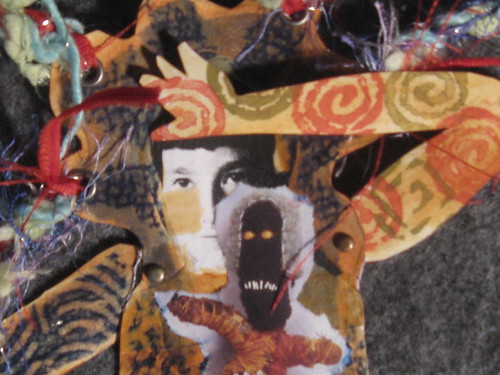I came across an interesting older article on creativity written in Scientific American (March 24, 2005).
The article covers a lot of ground by first demystifying the belief that creativity belongs only to the gifted. « Creative thinking is the norm in human beings and can be observed in almost all mental activities. »
However much of our education to the world works against it. As we pass through an educational system we are taught that there are right and wrong answers, right and wrong solutions to problems. Our educational system is strong on convergent thinking, identifying facts and coming up with a plausible answer. Creativity on the other hand begins with divergent thinking, a type of associative linking of ideas that builds into concepts and pictures of what can be possible.It is a branching outward from the center in contrast to convergent thinking that is working towards the center, a single one point perspective. Divergent thinking is the essence of creativity, however convergent thinking needs to be harnessed to move concepts and solutions from the real of ideas to workable solutions or concrete objets. Art therapy is structured in such a way as to move ideas, feelings, hunches from the realm of the intangible to the tangible through a concrete artwork. The art therapy process therefore mimics the creative process and thus, becomes a creative problem solving practice that can be transferred to other areas of living.
According to this article creativity is made up of the following components:
- ideational fluency: the number of ideas and associations one can think of when presented with a word, idea, concept
- variety and flexibility: diversity of solutions (or ways of working) one can come up with when presented with a problem
- originality: a measure of difference from what is usually found or done
- elaboration: The skill to formulate an idea, expand on it, then work it into a concrete solution
- problem sensitivity: the ability to recognize the central challenge, and difficulties associated with a task/problem
- redefinition: the capacity to view a known problem in a completely different light.
With the exception of originality, all of the above are important, some central to the workings of therapeutic change with or without art materials. In art therapy however, we will often take stock of these creativity measures with few words. Instead we look at fluency of ideas and themes in and about the artwork, variety and flexibility in use of media and materials, how they problem solve when faced with an artistic challenge or new situation, and how they can identify the central problem in the art they want to create and assess how to go about it. When ‘reading’ the image, much defining and redefining takes place. These non verbal means of evaluating creativity stand side by side with measures used by verbal therapists. Art therapy offers more options to look at and work with creative development and creative problem solving.
I find it interesting to note that creativity is often presented as cognitive activity; which it is. However much creativity is fuelled by our embodied sensing and feeling experience to the world (often evaded in the way it is presented), that is further translated into thought and further into form to complete the first round of the cycle. Working at expanding a client’s creativity, is help in becoming a more flexible thinker about challenges and problems and life in general.
The article also talks about right and left brain differences where research has now found that too much left brain thinking (the rational, critical side of the brain) inhibits creativity. This makes me think that we live in a world that is so left brain oriented that we are creating much of the malaise and dis-ease that is coming through the doors of our clinics. Did you ever think that a bit of poetry, good fiction, a few bright colors and a cup of soothing music could be what the doctor orders to keep your brain flexible, ready to tackle the complex challenges of our modern existence!! Not a bad prescription in my book with the added bonus of perhaps feeling pretty good when going down.
Classé dans creativity, divergent thinking, mental health.
Catégorisé dans Création, Thérapie.
Publié le 03 fév 2009
